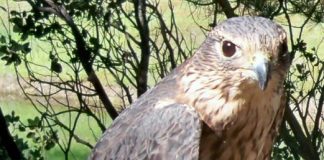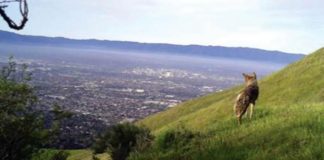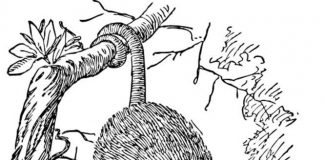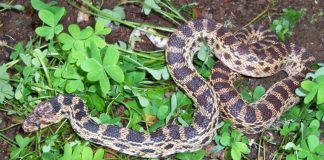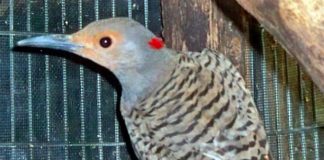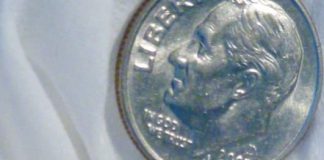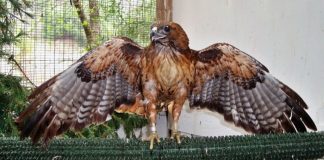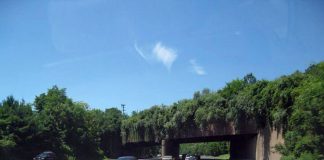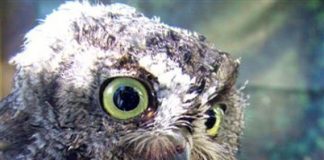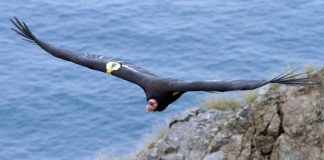For those wild animals that have been injured or orphaned, the Wildlife Education and Rehabilitation Center strives to mend their bodies and psyches and return them to their habitats, healthy and free. Unfortunately, other animals have suffered permanent injuries and their chances for long-term survival are negligible. But after considering certain conditions, such as the animal’s disposition, age and injuries, some of them may get a second chance and become a candidate for educational programs.
Human beings have too often been short-sighted when it comes to protecting the earth’s resources. In our defense, fresh air, clean water, wildlife and land often disappear slowly and their absence isn’t noticed until it’s too late. Also, it’s difficult to plan ahead when it appears that doing so will require us to change the lifestyle we’ve grown accustomed to. We enjoy large homes and easy access to supermarkets, big box stores and restaurants. The now-growing economy means we will need more homes and apartments for people to live in. Why not build on that lovely hillside, the one with the old oak trees and that great view of the valley?
Have you heard the one about the fox that shot a hunter in Belarus? According to a story published by Reuters, an “unnamed hunter” wounded a fox, then a scuffle occurred when he tried to finish off the animal with his rifle butt. The fox resisted and pulled the trigger, shooting the man in the leg. Red flag: The fox escaped, and there were no witnesses.
Several months ago I wrote about the probable consequences to wildlife of the anticipated drought. The drought has now officially arrived, and there is no longer much hope for any significant rain for the next six months. When water is lacking, plants do not grow, insects and rodents do not thrive and large animals that eat small animals have a difficult time finding a meal.
Instead of enjoying a little nip of a Chardonnay still on the vine, this red-shafted northern flicker encountered wrath among the grapes when it was attacked by a couple of dogs in March at a Gilroy vineyard. A neighbor walking his own dogs witnessed the incident and called WERC for a rescue. After a careful search through the rows of trellised vines, the bird was located hiding deep inside a ground squirrel hole. Fortunately, the dogs didn’t seriously injure the flicker, but gave it a brusque shaking. Because there was an old wound on its neck, it’s possible the bird had been previously injured, which might explain how the dogs were able to catch it.
I received a telephone call last week from the receptionist of a local business who had questions about a hummingbird nest outside her office window. The hummingbird had built a nest in a camellia tree and laid two eggs, which had hatched two days before. However, the mother hummer had not been seen since, and her entire office was worried about the baby birds.
The splendid red-tailed hawk was flying over the fields of Coyote Valley … with a band on. Early in February, the hawk was discovered along the side of Santa Teresa Boulevard unable to fly but with no apparent external injuries.
I am willing to bet that most people have a fence somewhere on their property. Perhaps their yard, like mine, is surrounded by a fence. Sometimes fences are needed to contain pets or livestock, and sometimes they are constructed to exclude unwanted animals, such as deer. Some fences provide security for the occupants. All of these are valid reasons for constructing a fence, but whatever the reason, a fence will likely have an effect on wildlife.
Call it the Circle of Life or Survival of the Fittest - wild animals in the wilderness die of starvation, diseases and predators. This is a natural part of life and most wildlife rehabilitators take a hands-off approach and let nature take its course. For instance, at Ano Nuevo I saw baby elephant seals lying on the beach in extreme distress. The ranger explained marine mammal organizations don't rescue these animals, as heartbreaking as the situation is. Instead, their mission is to rescue those creatures harmed due to human causes, such as caught in fishing nets and choked by plastic six-pack rings.
On this first anniversary of “Our Local World,” I want to take the opportunity to update some of the issues discussed in my columns of the past year.


